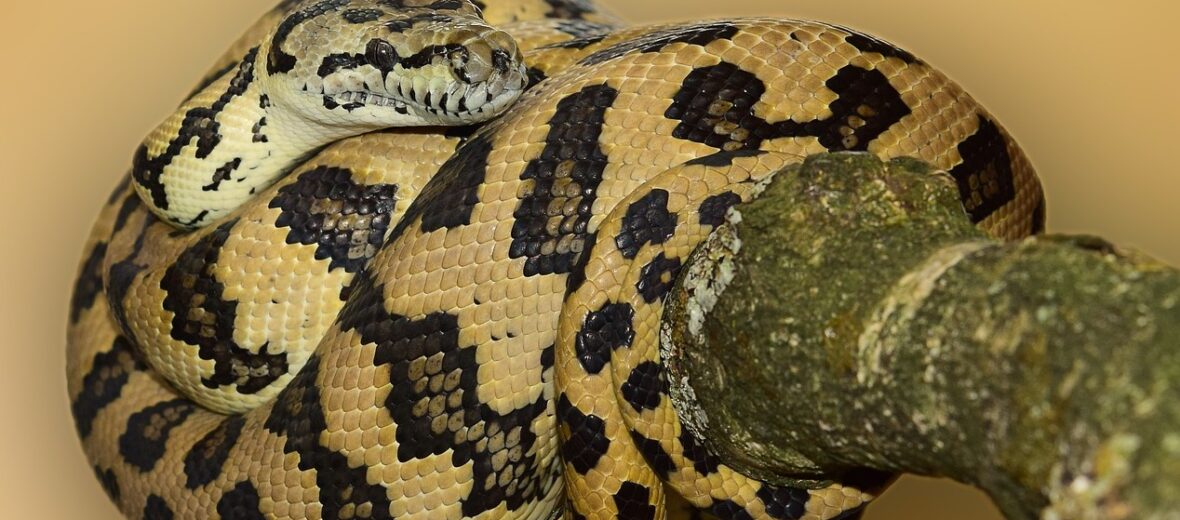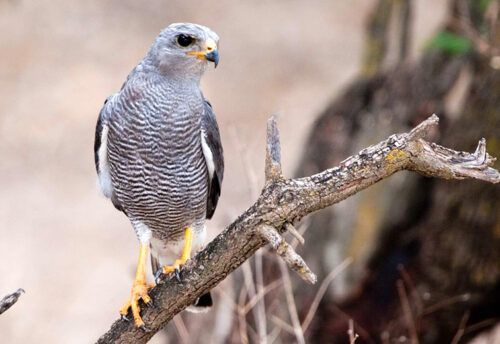
The jungle carpet python is found in mainland Australia, throughout northern, southern, and eastern regions of Australia. They can also be found in the arid islands of the Nuyts Archipelago. This is the most widespread of the Australian pythons. They are also called carpet snakes, Western Australian carpet pythons, or the inland rivers carpet python.
First the Stats…
Scientific name: Morelia spilota cheynei
Weight: Up to 10+ lbs.
Length: Up to 6 – 8 feet
Lifespan: Up to 30 years
Now on to the Facts!
1.) Carpet pythons are considered semi-arboreal (spend all or part of their time in trees) snakes who can easily climb trees and shrubs, but they can also move about open areas like the forest floor and rock faces.
2.) Even though they are typically a calm snake, they can also be a bit snarfy and have a nice bite on them.
3.) The carpet python feeds mostly on reptiles, amphibians, birds, rodents, and possums. Since these snakes are non-venomous they kill their prey by constricting it until the prey dies and then they swallow it whole; head first.
4.) Jungle carpet pythons are nocturnal (active at night).
5.) In order to find prey in the dark they use heat receptor pits on the front of their head to detect their thermal signature.
But wait, there’s more on the jungle carpet python!
6.) These pythons are also found near suburban areas and contribute to the elimination of pest vermin like rats and mice.
7.) The species is oviparous (lay eggs). Females typically have a clutch of 10 – 45 eggs during early summer.
Did you know…?
They have 80 sharp backwards-facing teeth that can be up to 1/4 – 1/3 + inches long!
8.) Being arboreal, these snakes have very strong muscles that allow them to extend up to 2/3 of their body in order to reach prey and far reaching branches.
9.) They are very popular in the pet trade due to their color and ,if acclimated well, they have a good temperament.
10.) A good point to make is that you should never wrap a python that is 3 feet or longer around your neck. They have a very strong squeeze that could get you into trouble, quick.
Now a Short Jungle Carpet Python Video!
Also, check out the Critter Science YouTube channel. Videos added frequently!
Want to suggest a critter for me to write about? Let me know here.



